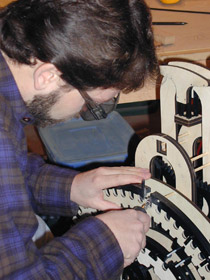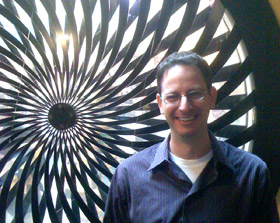World of Warcraft's Chris Metzen talks about the power of spinning ideas, and how he got his big break on a bar napkin.
This is the first part of a two-part interview. Be sure to also check out Part Two to hear about the ingredients of good interactive story-telling, the power of tribal creativity, and why Blizzard’s game makers will never put rubber nipples on Batman’s suit.

How do you explain to non-gamers what you do for a living?
My core responsibility is coming up with the worlds our games take place in. And over time, the worlds are becoming the game, strangely enough.
When I started out in this racket about fourteen years ago, we were making war games. Essentially, you’re playing through a sequence of maps with this virtual army you build over time. It was my job not only to create the single-player component of the game — the storyline that you ultimately track through in these ongoing wars — but also to just kind of create the universe behind the game so that when you weren’t actually playing, you might still be chewing on these concepts or characters or places that you’d experienced.
What were some of your big influences growing up?
Well, figure that everyone in the industry just loved Star Wars. Star Wars created a monster. But I think what shaped the monster [for me] ultimately was a mix between Dungeons & Dragons and comic books. Those were my absolute loves, as most geeks around here will probably repeat. I’m more a comic geek than anything else, honestly. I still have about a thirty-dollar habit per week. It’s gotten bad; I need a twelve-step program. I even still buy Marvel. So I just grew up with serial storytelling. Every week you could go to the store and see somebody’s latest adventure. That template — the way comics unfold over time — had a really big impact on me.
I loved D&D — I loved the big worlds, the big spanning themes, the big epic quests, the unfolding settings with ancient civilizations and ancient secrets coming back to haunt the present. I loved all that. I love mythology. And somehow, as a little kid, comics was the conveyance system — the media that really captured my imagination…. There was continuity, high drama, threads from beyond space and time. There were threads from the past. There were gods walking the earth. Everything I wanted to have my head in was right there.
Continue reading →
 Dan Brodnitz: I read that you also create mechanical art. What’s that work like?
Dan Brodnitz: I read that you also create mechanical art. What’s that work like?

